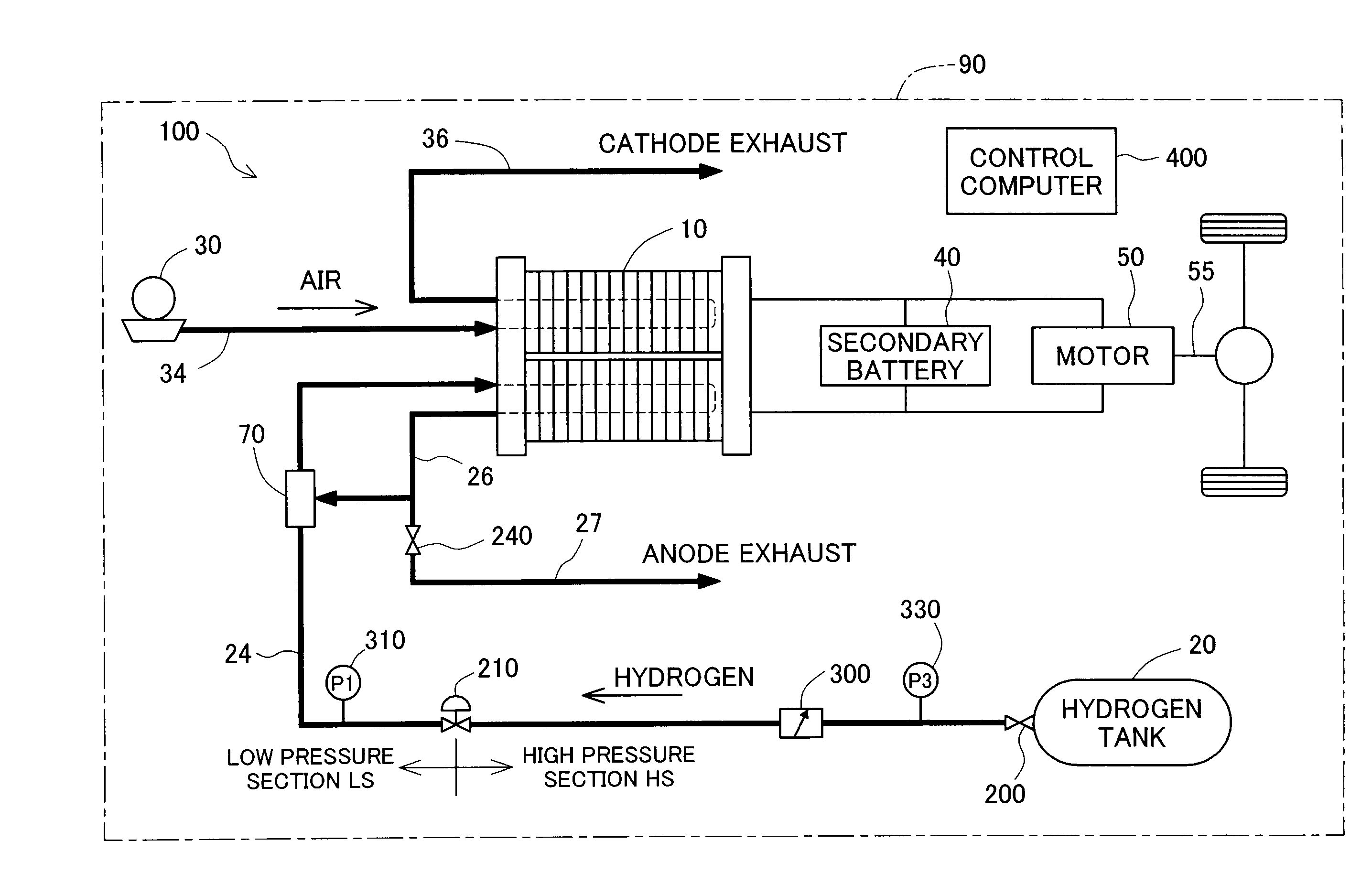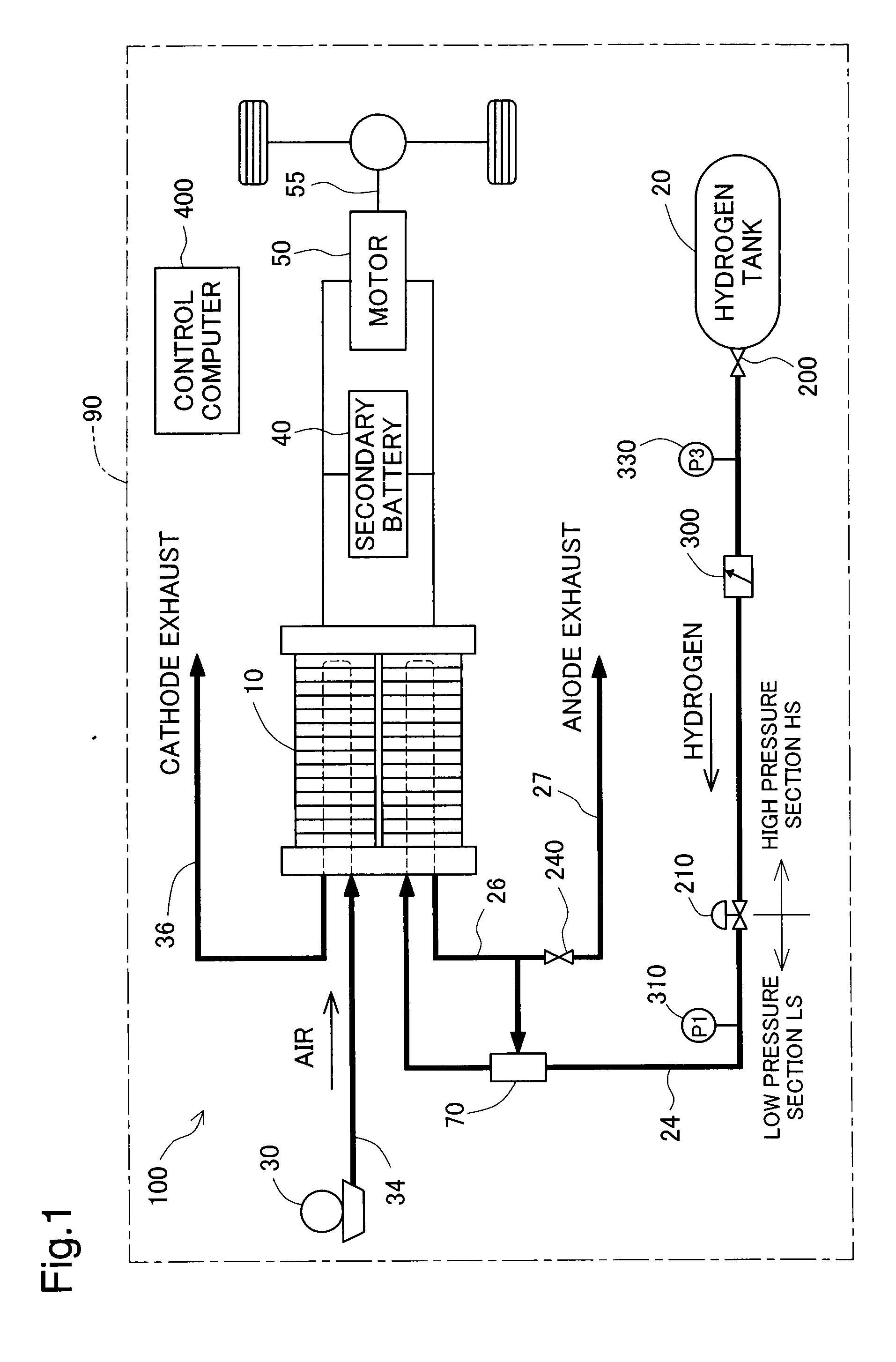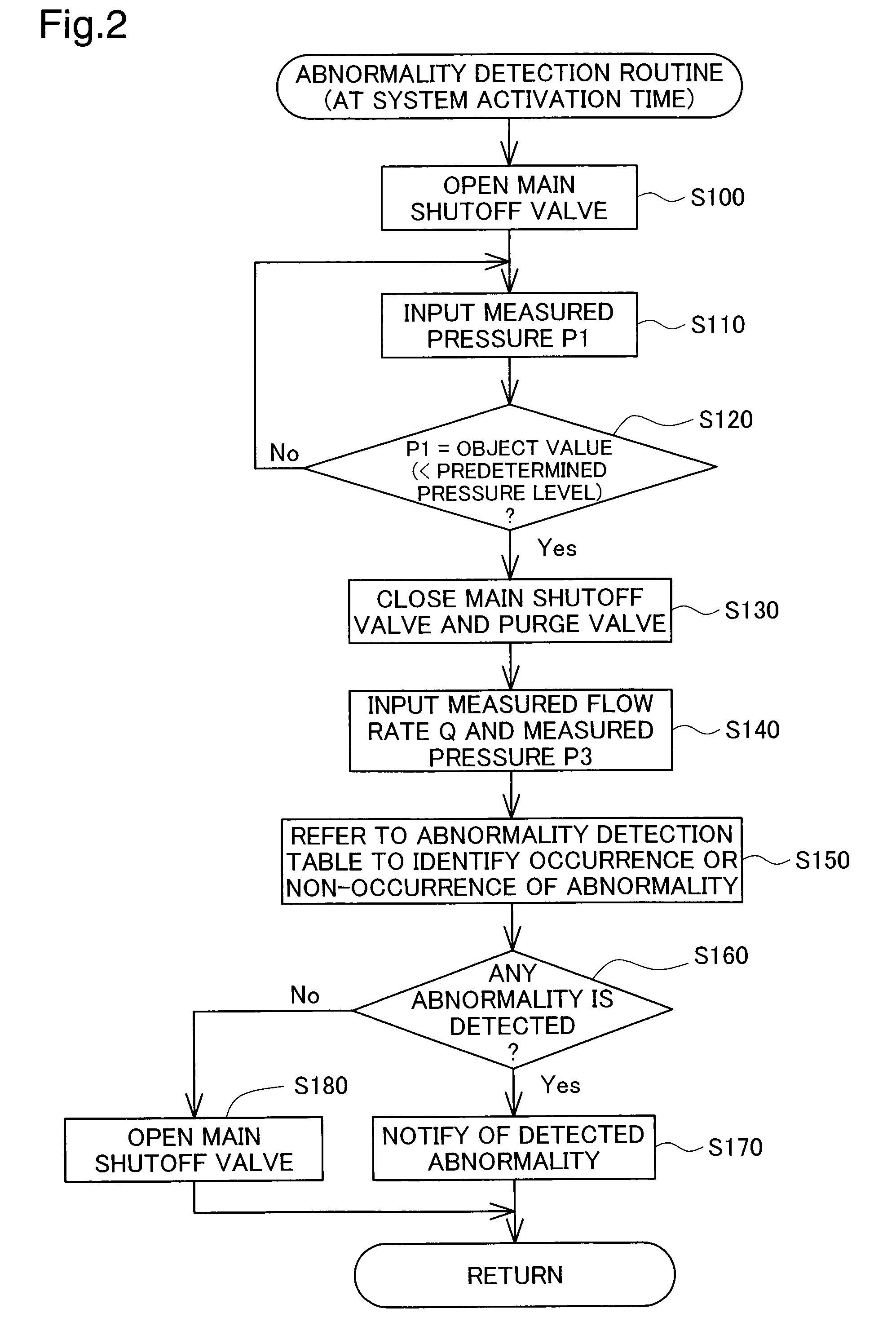Fuel cell system
a fuel cell and system technology, applied in the field of fuel cell systems, can solve the problems of inability to accurately detect the variation of pressure, pressure sensor may have difficulty in measuring the quantity of pressure decrease of hydrogen, etc., and achieve the effect of high-precision detection of hydrogen leakag
- Summary
- Abstract
- Description
- Claims
- Application Information
AI Technical Summary
Benefits of technology
Problems solved by technology
Method used
Image
Examples
first embodiment
A. First Embodiment
(A1) General Configuration of Fuel Cell System
[0062]FIG. 1 schematically illustrates the general configuration of a fuel cell system 100 in a first embodiment of the invention. As illustrated, the fuel cell system 100 of the embodiment is mounted on a vehicle 90 and includes fuel cells 10 that generate electric power through electrochemical reaction of hydrogen and oxygen, a hydrogen tank 20 that stores high-pressure hydrogen gas, an air compressor 30 that feeds the air to the fuel cells 10, a secondary battery 40 that is charged with the electric power generated by the fuel cells 10, a motor 50 that drives an axle 55 with the electric power generated by the fuel cells 10 and the electric power discharged from the secondary battery 40, and a control computer 400 that controls the operations of the fuel cell system 100 and the vehicle 90.
[0063]The fuel cells 10 are polymer electrolyte fuel cells and have a stack structure as a lamination of multiple unit cells (not...
first modified example
[0096]In the structure of the first embodiment, the pressure regulator 210 has the fixed set pressure and the automatically unadjustable opening. In a first modified example of the first embodiment, a variable pressure regulator is adopted for the pressure regulator 210 and has an opening automatically adjustable under control of the control computer 400.
[0097]FIG. 6 is a flowchart showing an abnormality detection routine in the first modified example with the variable pressure regulator as the pressure regulator 210. This abnormality detection routine is performed in the system stop state. In the abnormality detection routine of FIG. 6, the control computer 400 first closes the main shutoff valve 200 and the purge valve 240 (step S500) to shut off the flow path connected to the anodes of the fuel cells 10. The control computer 400 subsequently forces the variable pressure regulator to be fully opened (step S510).
[0098]The control computer 400 inputs the pressure P1 measured in the ...
second modified example
[0101]FIG. 7 schematically illustrates the general configuration of a fuel cell system 100b in a second modified example. The fuel cell system 100b of the second modified example shown in FIG. 7 has a similar structure to that of the fuel cell system 100 of the first embodiment shown in FIG. 1 but additionally includes a buffer tank 21 located between the main shutoff valve 200 and the hydrogen flowmeter 300 in the hydrogen supply flow path 24. The buffer tank 21 temporarily stores hydrogen gas supplied from the hydrogen tank 20 into the hydrogen supply flow path 24.
[0102]In the course of abnormality detection in the closed state of the main shutoff valve 200 and the purge valve 240, the hydrogen gas temporarily stored in the buffer tank 21 is supplied to the hydrogen supply flow path 24 connected with the buffer tank 21. This arrangement extends the time usable for detection of a hydrogen leakage and thus desirably enhances the accuracy of leakage detection.
PUM
 Login to View More
Login to View More Abstract
Description
Claims
Application Information
 Login to View More
Login to View More - R&D
- Intellectual Property
- Life Sciences
- Materials
- Tech Scout
- Unparalleled Data Quality
- Higher Quality Content
- 60% Fewer Hallucinations
Browse by: Latest US Patents, China's latest patents, Technical Efficacy Thesaurus, Application Domain, Technology Topic, Popular Technical Reports.
© 2025 PatSnap. All rights reserved.Legal|Privacy policy|Modern Slavery Act Transparency Statement|Sitemap|About US| Contact US: help@patsnap.com



